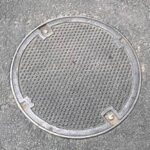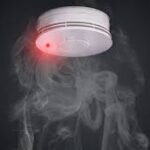The world of plumbing has seen remarkable advancements over the years, making our lives more convenient and comfortable. One such innovation that has gained attention is the Studor Vent. While often hidden from plain sight, these unassuming devices play a crucial role in maintaining proper plumbing functionality. In this blog post, we’ll delve into what Studor Vents are, how they work, and why they are an essential component of modern plumbing systems.
What is a Studor Vent?
Studor Vents, named after the company that popularized them, are air admittance valves (AAVs) used in plumbing systems to prevent the loss of water seals in traps due to negative pressure. Traps are essential components in plumbing systems; they are curved pipes that hold water to prevent sewer gases from entering living spaces. Without proper ventilation, negative pressure can be created, siphoning water out of the traps and allowing foul odors to infiltrate indoor spaces. Studor Vents are designed to address this issue by allowing air to enter the plumbing system when needed, thereby equalizing pressure and preventing trap seal loss.
How Do Studor Vents Work?
Studor Vents operate on a simple yet effective principle. When water flows down a drain, it creates a negative pressure in the plumbing system. This negative pressure can lead to the siphoning of water from traps, resulting in the release of sewer gases. Studor Vents are installed in strategic locations within the plumbing system, usually in locations where traditional venting methods are impractical or costly.
When negative pressure occurs in the system, the Studor Vent’s one-way valve opens, allowing air to enter and equalize the pressure. This prevents the water from being siphoned out of traps and maintains the integrity of the water seal, effectively preventing the escape of foul odors into living spaces. After the negative pressure is resolved, the valve closes, preventing any backflow of gases.
Where do you use a Studor vent?
Studor vents, also known as air admittance valves (AAVs), are used in various plumbing scenarios (Refer to Fig. 1) where traditional venting methods might be impractical, expensive, or not feasible due to space constraints or architectural considerations. Here are some common situations where Studor vents are used:
Kitchen and Bathroom Sinks:
In homes or buildings where it’s difficult to install traditional vent pipes through walls or roofs, Studor vents can be used to provide proper ventilation for kitchen and bathroom sink drains. These vents help prevent the loss of trap seals and the escape of sewer gases into indoor spaces.
Island Sinks:
Kitchen islands often lack nearby walls for vent pipe installation. Studor vents can be an excellent solution in such cases, allowing for proper venting without the need for complex pipe routing.
Bar Sinks:
Similar to island sinks, bar sinks may not have easy access to traditional venting methods. Studor vents provide a convenient and effective alternative.
Basement Bathrooms:
When adding a bathroom to a basement where it’s challenging to extend vent pipes to the roof, Studor vents can be installed to ensure proper ventilation without extensive modifications.
Remodeling and Retrofitting:
In situations where renovating existing plumbing systems to accommodate traditional venting methods would be disruptive and costly, Studor vents offer a practical solution.
Cold Climates:
Studor vents can be beneficial in cold climates where traditional vent pipes might be prone to freezing and causing plumbing issues. Studor vents are less susceptible to freezing due to their design.
Commercial Buildings:
Studor vents are often used in commercial settings where space limitations and the need for efficient installation are critical factors.
Roof Decks and Terraces:
For buildings with roof decks or terraces where venting through the roof is challenging, Studor vents provide an effective way to ensure proper drainage and ventilation.
Renovations:
During renovations or retrofits, Studor vents can be installed to overcome venting challenges without extensive structural modifications.
It’s important to note that the use of Studor vents should comply with local plumbing codes and regulations. While they offer many benefits in specific scenarios, they are not a universal replacement for traditional venting methods in all plumbing applications. Consulting with a plumbing professional or local building authorities is advisable to determine the appropriate use and installation of Studor vents based on specific plumbing requirements and regulations.

Benefits of Studor Vents
- Space-Saving Design: Studor Vents are especially useful in scenarios where traditional venting methods, such as roof vents or through-wall vents, are not feasible due to space constraints or architectural limitations.
- Cost-Effective: Installing Studor Vents can be more cost-effective than traditional venting methods, as they require less complex piping and construction work.
- Reduced Odor and Health Risks: By maintaining the water seals in traps and preventing sewer gases from entering indoor spaces, Studor Vents contribute to a healthier and more comfortable environment for building occupants.
- Versatility: Studor Vents can be used in a variety of plumbing applications, including residential, commercial, and industrial settings.
- Preventing Frozen Pipes: In cold climates, Studor Vents can help prevent freezing and potential damage to plumbing systems that can result from traditional vent pipes.
Considerations and Installation of Studor Vents
While Studor Vents offer numerous benefits, it’s important to consider a few factors before installation. Local plumbing codes and regulations vary, so it’s crucial to ensure that using Studor Vents complies with your area’s guidelines. Additionally, proper maintenance and periodic inspections of these vents are necessary to ensure their effectiveness over time.
Installing a Studor vent, also known as an air admittance valve (AAV), requires careful consideration of plumbing codes, proper placement, and appropriate installation techniques. Here’s a general guide on how to install a Studor vent:
Materials Required during Installing:
- Studor vent (ensure it meets local plumbing codes and regulations)
- Pipe cutter or hacksaw
- Pipe fittings (if necessary)
- Pipe glue or thread sealant (if using threaded fittings)
- Measuring tape
- Pencil or marker
- Pipe wrench or pliers
Studor Vent Installation Steps
- Check Local Codes: Before you begin, review your local plumbing codes and regulations to ensure that the use of Studor vents is allowed and to understand any specific requirements for their installation.
- Choose the Installation Location: Select a suitable location for the Studor vent. It should be installed above the highest drain in the drainage system and at least 4 inches (100 mm) above the flood-level rim of the highest fixture it serves.
- Prepare the Pipe: If you’re installing the Studor vent on an existing plumbing line, you’ll need to cut the pipe where you intend to install the vent. Use a pipe cutter or hacksaw to make a clean, straight cut.
- Install Fittings (If Necessary): Depending on your plumbing setup and the type of Studor vent you have, you might need to install fittings to connect the vent. If using threaded fittings, apply thread sealant to ensure a watertight connection. If using glue-on fittings, apply pipe glue following the manufacturer’s instructions.
- Attach the Studor Vent: Attach the Studor vent to the prepared pipe or fittings. Ensure that the vent’s arrow points in the direction of the flow (toward the fixture or drain).
- Secure the Vent: Use pipe wrenches or pliers to tighten the vent onto the pipe or fittings securely. Be careful not to over-tighten, as this could damage the vent or fittings.
- Check for Proper Alignment: Ensure that the Studor vent is aligned properly and upright. The arrow on the vent should indicate the direction of flow.
- Test the Vent: Turn on water fixtures connected to the drainage system to ensure proper drainage and ventilation. Listen for any unusual noises that might indicate issues with the Studor vent.
- Observe Operation: Observe the Studor vent during various drainage activities to ensure that it operates as intended. You should see the vent’s one-way valve open when negative pressure occurs and close afterward.
- Final Inspection: After installation, check the Studor vent for any leaks or issues. It’s a good idea to periodically inspect the vent to ensure its ongoing functionality.
Studor Vent Under Sink:
A Studor vent located under a sink is a compact and efficient solution for maintaining proper plumbing system ventilation. In situations where traditional vent pipes are challenging to install, such as in tight spaces or remote locations, a Studor vent placed under the sink provides a way to prevent negative pressure and maintain water seals in traps. This prevents sewer gases from escaping into indoor spaces, ensuring a clean and odor-free environment. The Studor vent’s one-way valve opens when needed, allowing air to enter the system and equalize pressure, and closes afterward to prevent the backflow of gases.
Studor Vent for Toilet:
A Studor vent for a toilet is a valuable addition to plumbing systems, especially in cases where traditional venting methods are impractical or expensive. Installing a Studor vent near a toilet helps prevent the loss of trap seals and the escape of foul odors that could result from negative pressure. This is particularly useful when adding a toilet to a space where vent pipe installation to the roof or exterior wall is difficult. The Studor vent ensures that the toilet functions properly while maintaining a hygienic indoor environment.
Studor Vent for Plumbing:
Studor vents play a critical role in plumbing systems by providing an alternative to conventional venting methods. When plumbing codes allow, Studor vents can be strategically placed in various locations throughout a plumbing system to prevent trap seal loss due to negative pressure. These vents are versatile and can be used in residential, commercial, and industrial settings. By allowing air to enter the plumbing system when needed and preventing sewer gases from escaping, Studor vents contribute to efficient and safe plumbing operations.
Studor Vent Box:
A Studor vent box is a pre-fabricated enclosure designed to house Studor vents in an organized and aesthetically pleasing manner. These boxes are typically installed within walls or cabinets and serve as a convenient solution for concealing Studor vents while allowing easy access for maintenance. The box provides a neat and tidy appearance, making it an excellent choice for situations where aesthetics are a concern. It ensures that Studor vents are functional, accessible, and compliant with plumbing codes.
Studor Vent for Washing Machine:
Installing a Studor vent for a washing machine is a practical solution when traditional venting methods are not feasible. Washing machines generate water flow that can create negative pressure in the plumbing system, potentially leading to trap seal loss and sewer gas odors. A Studor vent installed near the washing machine’s drain prevents this issue by allowing air to enter the system during drainage, equalizing pressure, and maintaining trap seals. This ensures that the washing machine operates effectively while preventing unpleasant odors from entering living spaces.
In conclusion, Studor Vents are innovative solutions that address the challenges of maintaining proper plumbing system ventilation in various scenarios. Their space-saving design, cost-effectiveness, and ability to prevent foul odors make them valuable components in modern plumbing systems. By understanding how Studor Vents work and their benefits, homeowners, builders, and plumbers can make informed decisions to create efficient and reliable plumbing systems.






